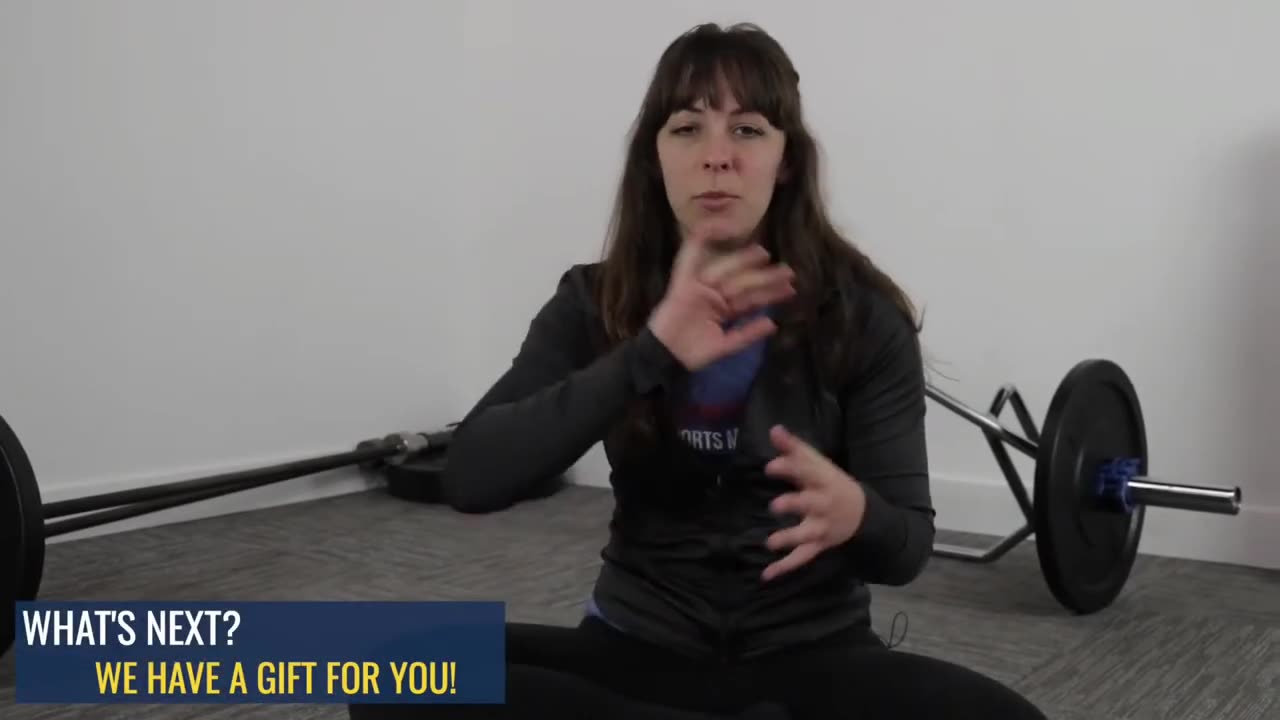Premium Only Content

How To Stretch A Pectineus Muscle Strain For Pain Relief
If you're experiencing pain in the front of you hip or groin, you may have a Pectineus muscle strain. We'll show you how to stretch the Pectineus muscle strain and relieve your pain.
This Pectineus muscle strain stretch is a great way to prevent further damage to the muscle and to speed the healing process. After you've done the stretch, be sure to apply heat to the area to help heal the muscle faster. If you follow these steps, you'll be able to get relief from your Pectineus muscle strain and keep your hip and adductor healthy!
Want more info? We have a free webinar that covers hip joints, labrums, groin, adductor, lower abdominal strains and sports hernia diagnosis in detail. Use this link to get access.
Option 1: Groin On-Demand Webinar https://www.p2sportscare.com/webinars/#flexor
Option 2: Self Help eBooks https://www.p2sportscare.com/product/understanding-hip-diagnosis-book/ and https://www.p2sportscare.com/product/weight-training-back-hip-groin/
Option 3: 12 Week Video Guide https://www.p2sportscare.com/product/hip-program/
Option 4 (the best): Work With Us https://www.p2sportscare.com/
[Performance Place website low back article excerpt] Hip flexor pain can wreak havoc on your love for running. Many of us run for weight loss or because it’s something we feel we “need to do” to be healthy. But not Julie. She simply loved the act of running!
A 10-minute marathon runner in her mid-40s, Julie would typically run five days per week. Some days she would run in track groups, rising to the challenge when her friends motivated her to get faster. Other times, she relished the solitude of solo runs.
Running was Julie’s “fix.” So when a cluster of symptoms started keeping her from doing what she loved, she knew she needed to take action. She came to Performance Place® Sports Care after seven months of unsuccessful attempts at treating the pain. I knew a detailed examination and proper guidance on how to decrease her symptoms would get her on the right track.
How It All Started
About 10 months ago, Julie began to notice hip flexor and sit bone pain when she ran. Since she didn’t do anything to create it, she thought it would go away on its own—just like most of her minor running-related issues had in the past.
But this time was different.
Soon, her hip flexor and sit bone were starting to ache at the very first step of her morning run, causing her pain for the entire duration. Her sit bone region would feel aggravated all day, especially exacerbated when she sat for long periods of time at work. The pain weighed on Julie’s mind. She wondered what she could do to make it go away.
When Julie couldn’t stand the aching any longer, she decided to take a break from running for a few days. Her hip flexor pain stopped, so she made the difficult decision of not running for two weeks.
Although it was painful to give up running, she hoped the pause would give the condition time to improve. And it did—until she hit the track again.
Just one minute into Julie’s first run in weeks, the pain surged back in full force. Frustrated, she decided to seek help.
What Didn’t Work
Julie started by exploring the typical healthcare route. But she quickly became irritated when her primary care doctor suggested rest and over-the-counter anti-inflammatory medications. She had already tried rest, to no avail, and she didn’t like the idea of medication. Her doctors thought she could have a labral tear in her hip, hip impingement or hip arthritis.
Unsatisfied, Julie searched for a better solution.
Her next stop was to see a physical therapist who was highly recommended by one of her friends. Physical therapy was covered by Julie’s insurance, minus deductible and copay, so she decided to give it a try.
Under her physical therapist’s guidance, Julie tried to remedy her problems with a daily 15-minute routine consisting of stretching, glute strengthening and hip mobility drills. As her inpatient care, she received tool-assisted soft tissue work. But despite two months of diligently following this plan, her sit bone was still tender while sitting at work. And she still hadn’t returned to running.
Frustrated by the lack of progress, Julie continued searching for a real solution.
Next, she visited a chiropractor suggested by a friend whose sciatica and hip pain had improved under his care. Julie received adjustments and soft tissue work two times per week, which was covered partially by her insurance. But after three months, she saw little improvement.
#StretchAPectineusMuscleStrain #PainRelief
-
 LIVE
LIVE
The Dan Bongino Show
1 hour agoWhat Did Zelensky Know? When Did He Know It? (Ep. 2426) - 02/19/2025
98,504 watching -
 LIVE
LIVE
Steven Crowder
2 hours ago🔴 Fight! Major Lawsuit Announcement...
68,727 watching -

Timcast
1 hour agoDemocrats PANIC Over Trump Order To "Seize Control" Of Federal Agencies, Trump Asserts FULL Control
24K23 -
 LIVE
LIVE
MYLUNCHBREAK CHANNEL PAGE
16 hours agoA Little Help From Angels?
492 watching -
 LIVE
LIVE
LFA TV
15 hours agoLET'S KASH IN! | LIVE FROM AMERICA 2.19.25 11AM
3,066 watching -
 LIVE
LIVE
Caleb Hammer
28 minutes agoChildish Couple Won’t Stop Cheating On Each Other | Financial Audit
210 watching -
 23:18
23:18
Crowder Bits
3 hours agoDebunked: John Oliver's Outrageous Lies About Trump 2.0
8.43K16 -
 LIVE
LIVE
Matt Kohrs
11 hours agoMarket Open: Key Options Levels & Breaking News || The MK Show
1,410 watching -
 42:49
42:49
BonginoReport
4 hours agoBlasphemy: Hollywood Casts Queer Female Jesus (Ep.143) - 02/19/2025
63K131 -
 LIVE
LIVE
Wendy Bell Radio
6 hours agoGETTING IT DONE
11,413 watching